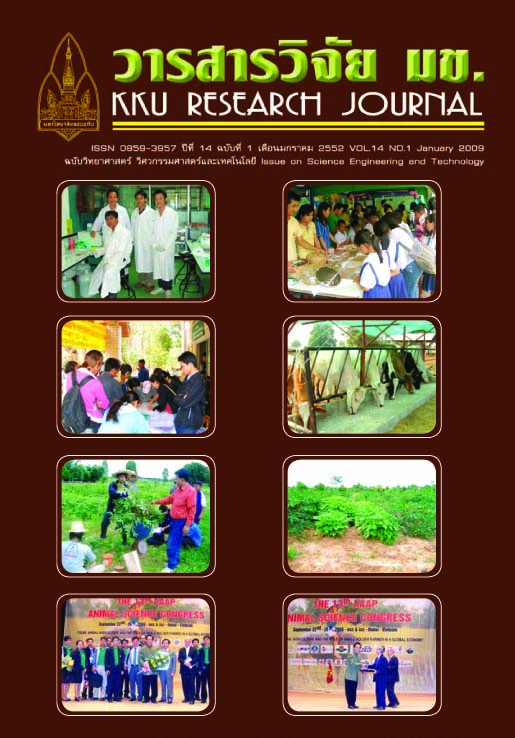Influence of tillage and compost on soil bulk density, rice yield and methane emission (Thai)
Main Article Content
Abstract
An irrigated rice field is one of the main sources of carbon dioxide and methane emissions, which are greenhouse gases contributing to global warming. Soil preparations for rice cultivation such as application of rice straw compost, incorporation of rice stubble, harrowing and puddling, have an influence on soil bulk density, organic matter decomposition and methane emission. An experiment was carried out on a paddy field with sandy clay loam soil. The experimental design was a split plot in CRD, main plots were without and with rice straw compost (C:N 26) at 350 kg / rai, and subplots were 3 types of tillage: 1) incorporation of rice stubble, 2) incorporation of rice stubble and harrowing, and 3) incorporation of rice stubble, harrowing and puddling. A total of six treatments with 3 replications were conducted. It was found that incorporation of rice stubble, harrowing and then puddling caused higher soil bulk density compared with sole incorporation of rice stubble. Soil tillage promoted a higher number of rice plants per unit area, but gave no response to rice yield. The addition of rice straw compost, at 350 kg/rai, led to an additional rice yield by 19 - 27 % compared with no rice straw compost. Incorporation of rice stubble, followed by harrowing and puddling emitted total methane emission of 794 - 990 g CH4 /m2 , increased by 633 - 641 % compared with sole incorporation of rice stubble. Rice straw compost combined with each type of tillage contributed to total methane emission of 135 - 990 g CH4 /m2 , enhanced by 25 - 61 %. Rice straw compost with incorporation of rice stubble, harrowing and puddling emitted 2,519 - 2,680 g CH4 / kg grain which was higher than that of sole incorporation of rice stubble at 391 - 395 g CH4 / kg grain. The results suggest that reduction of paddy soil tillage could mitigate methane emission and have no effect on grain yield.

